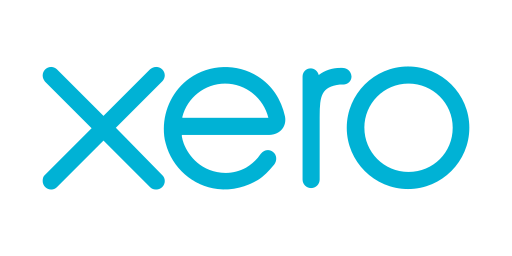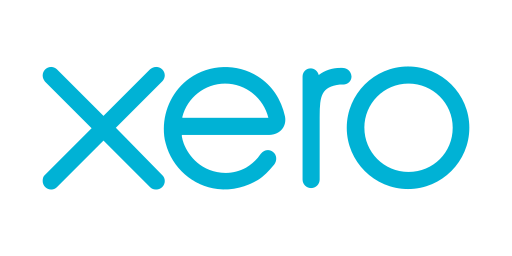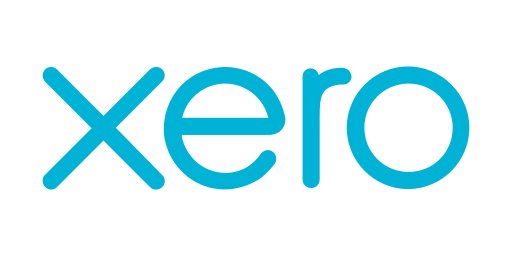- Home
- All Integrations
All Integrations

Xero Search for Accounts Integration
$0.00
Search for Accounts (Xero) | Consultants In-A-Box Turn Xero Account Searches into Instant Insights with AI-Powered Automation Searching for the right account in your accounting system shouldn’t be a manual scavenger hunt. The Xero "Search for Accounts" capability lets your systems locate specific account records, balances, a...

Xero Search Assets Integration
$0.00
Xero Search Assets | Consultants In-A-Box Turn Asset Ledgers into Actionable Insights with Xero Search Assets and AI Automation Xero's Search Assets capability turns your fixed-asset register from a passive record into a practical source of operational intelligence. Instead of hunting through spreadsheets or waiting for mont...

Xero Remove a Contact from a Contact Group Integration
$0.00
Xero Contact Group Automation | Consultants In-A-Box Keep Contact Groups Accurate and Compliant with Automated Xero Workflows Keeping contact groups clean in your accounting system sounds simple until it isn’t. Between customers, vendors, contractors, partners and temporary project contacts, group membership changes constant...

Xero Projects Update a Time Entry Integration
$0.00
Update Time Entries in Xero Projects | Consultants In-A-Box Keep Project Time Accurate and Automated with Xero Projects Time Entry Updates Time is the backbone of project accounting: it drives billing, payroll, forecasting, and how teams are rewarded. Small changes — correcting hours, moving entries to the right task, or fix...

Xero Projects Update a Task Integration
$0.00
Xero Projects Task Update Automation | Consultants In-A-Box Keep Projects Accurate and Agile with Automated Task Updates for Xero Projects Updating a task in Xero Projects is a deceptively small control point that has outsized influence on project delivery, billing accuracy, and team coordination. When every task record—name...

Xero Projects Update a Project Status Integration
$0.00
Xero Project Status Automation | Consultants In-A-Box Keep Projects Accurate and Teams Aligned: Automating Xero Project Statuses The ability to reflect a project's true state—active, paused, completed, or archived—matters more than ever. The Xero Projects update status capability gives organizations a single, authoritative w...

Xero Projects Update a Project Details Integration
$0.00
Xero Projects Update Automation | Consultants In-A-Box Keep Project Data Accurate and Actionable: Automating Xero Projects Updates Updating project details in Xero — names, deadlines, budgets, team assignments, and billing methods — is essential to keep work moving and invoices correct. When those updates depend on manual en...

Xero Projects Make an API Call Integration
$0.00
Xero Projects Automation | Consultants In-A-Box Turn Xero Projects Into Automated Project Tracking and Profitability Insights The Xero Projects "Make an API Call" capability makes your project accounting a living, connected part of your operations. In plain language, it gives other apps and automation systems a reliable way ...

Xero Projects List Time Entries Integration
$0.00
Xero Projects Time Entries Automation | Consultants In-A-Box Turn Time Entries into Clear Billing, Better Forecasts, and Faster Decisions The Xero Projects "List Time Entries" capability gives teams a single, dependable view of every minute logged against projects and tasks. Instead of hunting through spreadsheets or chasing...

Xero Projects List Projects Integration
$0.00
Xero Projects — List Projects | Consultants In-A-Box Turn Project Data into Action: How the Xero Projects “List Projects” Capability Drives Business Efficiency The Xero Projects "List Projects" capability provides a single, reliable roster of every project your organization is managing — active, paused, and completed. In pla...

Xero Projects List Project Users Integration
$0.00
List Project Users — Xero Projects | Consultants In-A-Box Turn Project Rosters into Business Impact: Automate Resource, Billing, and Collaboration with Project User Lists The ability to see who is on a project might sound mundane, but it is a cornerstone for better resource planning, clearer accountability, and streamlined b...

Xero Projects Get a Time Entry Integration
$0.00
Xero Projects — Get a Time Entry | Consultants In-A-Box Turn time logs into accurate invoices and actionable insights with Xero Projects' Get a Time Entry Get a Time Entry in Xero Projects gives you a single, authoritative record of a specific work session — who did the work, when it happened, how long it took, what notes we...

XMP Set Tags Integration
$0.00
XMP Set Tags | Consultants In-A-Box Turn Metadata Into Business Speed: Automated Tagging with XMP "Set Tags" The XMP "Set Tags" capability makes metadata work for the business instead of the other way around. Instead of relying on manual renaming or inconsistent folder structures, organizations can programmatically attach de...

XMP Get Tags Integration
$0.00
Get Tags (XMP) | Consultants In-A-Box Turn Hidden File Metadata into Actionable Workflows with Get Tags Every digital file—images, documents, audio, and video—carries a fingerprint of information that often goes unnoticed. XMP (Extensible Metadata Platform) stores that fingerprint as tags: title, creator, usage rights, proje...

XMP Remove Tags Integration
$0.00
Remove Tags | Consultants In-A-Box Remove XMP Tags to Protect Privacy, Shrink Files, and Simplify Asset Workflows Remove Tags for XMP metadata gives organizations a precise, scalable way to strip unwanted or sensitive metadata from digital assets. In plain language, it’s a capability that cleans the hidden data attached to f...

Xero Projects List Tasks Integration
$0.00
Xero Projects — List Tasks | Consultants In-A-Box Make Project Oversight Predictable: Turn Xero Projects Task Lists into Business Value Xero Projects' task list is more than a simple register of to-dos — it's the single source of truth about who is doing what, how much time has been logged, and where work sits in the deliver...

Xero Watch Events Integration
$0.00
Xero Watch Events API Endpoint | Consultants In-A-Box Keep Your Financial Systems Synchronized: Real‑Time Updates with Xero Watch Events The Xero Watch Events capability turns your accounting system into a live source of truth. Instead of periodic checks or manual exports, your stack receives immediate signals when impo...

YNBA Make an API Call Integration
$0.00
Unfortunately, without more context or a correct reference to an API named "YNBA" or a specific "Make an API Call Integration," it's challenging to provide a precise response. Since "YNBA" isn't a widely recognized API in the tech industry as of my knowledge cutoff in 2023, it is possible that it is a hypothetical, proprietary, or newly introduc...

YNBA Budget to a Category Integration
$0.00
Below is an explanation of the YNAB (You Need A Budget) Budget to a Category Integration API endpoint and the problems it can solve, presented in proper HTML formatting: ```html YNAB Budget to Category Integration Explanation YNAB Budget to Category Integration Explained The YNAB (You Need A Budget) API ...

YNBA List Transactions Integration
$0.00
Sure, I can provide that information in about 500 words and in proper HTML formatting. However, please note that there is not a widely known API endpoint specifically called "YNBA List Transactions Integration" as you mentioned. It seems like you might be referring to an API for a financial application possibly similar to YNAB (You Need A Budget...

YNBA Create Transactions Integration
$0.00
I'm sorry, but without specific details about the API endpoint you're referring to, it's challenging to provide an accurate description of what can be done with it or what problems it may solve. The acronym "YNBA" is not a standard or widely recognized API endpoint in the tech industry as of my knowledge cutoff in March 2023. However, I can pro...

YNBA Budget to a Category Integration
$0.00
The YNBA (You Need A Budget) Budget to a Category Integration API endpoint is a powerful tool designed to facilitate the automation and streamlining of personal and organizational budget management. This particular endpoint allows applications to interact with a user's YNBA budget in a specific way: by integrating budget amounts into budget cate...

YNBA List Transactions Integration
$0.00
The YNBA (You Need A Budget) List Transactions Integration API endpoint is a feature offered by the YNBA budgeting software, designed to provide developers and users with the ability to fetch a list of financial transactions from their budgeting accounts. This API endpoint is a part of a broader suite of online tools provided by the YNBA softwar...

YNBA Create Transactions Integration
$0.00
Create Transactions Integration - API Endpoint Understanding the YNBA Create Transactions Integration API Endpoint The YNBA (Your New Bank Application) Create Transactions Integration API endpoint is a powerful interface that allows developers to programmatically create financial transactions within a banking or f...

YepCode Invoke Process Integration
$0.00
The API endpoint "YepCode Invoke Process Integration" is designed to allow users to trigger and execute code processes that have been set up as part of integration workflows. This particular endpoint acts as an interface between external applications or services and the predefined processes that reside within the YepCode environment. By utilizin...
Yeeflow Make an API Call Integration
$0.00
Understanding Yeeflow Make an API Call Integration What can be done with the Yeeflow Make an API Call Integration Yeeflow is a no-code/low-code development platform that allows users to create custom applications to streamline business processes and workflows. One of its many features is the integration of API calls, which broadens the ...
Yeeflow Delete an Item Integration
$0.00
Yeeflow is a no-code application platform that allows users to create custom applications to manage workflows, processes, and data. The "Delete an Item" integration API endpoint in Yeeflow allows a user or an application to remove an item or record from a particular application or database collection through an HTTP DELETE request. This API end...
Yeeflow Update an Item Integration
$0.00
Understanding the Yeeflow Update an Item Integration API Endpoint The Yeeflow Update an Item Integration API endpoint is a powerful tool for developers looking to seamlessly update items in a Yeeflow application. Yeeflow is a comprehensive no-code platform that enables users to create custom applications for automating business processes. The i...
Collections
- 0CodeKit Integrations
- Accounting
- ACH Processing
- Active Campaign
- Ai Automations and Integrations
- Aircall
- All Integrations
- Annuities
- ATS
- Auto & Home
- BI and Analytics
- Brand Management
- Bullhorn Integration Endpoints
- Business Infrastructure
- Business Operations
- Business Retirement Plans
- Business Systems
- Card Access
- CCaaS
- Clio Integrations
- Cloud Services
- Connectivity, MPLS, Private Line
- Cost Reduction
- CPaaS/SIP
- Customer Relationship Management
- Data Center
- Developer Platforms
- Development
- E-Commerce
- E-Commerce Software
- eREIT
- Field Service Automations and Integrations
- Finance Automations and Integrations
- Financial
- Fire Alarm Systems
- Fleet Tracking
- FTP Hosting
- Gift Card & Loyalty
- Google Sheets
- Graphic Design
- Health
- Healthcare Software
- HR and HCM Automations and Integrations
- HR Software
- Human Resources
- Implemenation
- Insurance
- Integrate RingCentral With Monday.com
- Integrations
- International
- Intrusion Systems
- Investments
- Invoicing
- Invoicing and Contract Software
- Lead Generation
- Learning Management
- Legal
- Legal Services
- Long Term Care
- Managed Investments
- Managed Services
- Marketing
- Marketing
- Marketing Automations and Integrations
- Micro Funding
- Mobile Payments
- Mobility/IoT
- Monday.com Integrations
- Mutual Funds
- Other
- Others Software
- Outsourced Sales
- Pay Per Click
- Payment Processing
- Payroll
- Phone Systems
- Photography
- Pre-Paid Legal
- Print & Promotional
- Process Implementation
- Product Management
- Productivity
- Productivity & Efficiency Improvement
- Project Management
- Recuritment
- Recurring Payments
- RingCentral Integrations
- Sales Software
- Sales Training
- SD-WAN
- Search Engine Optimization
- Security
- Security and IT Management
- Security Systems
- Sling Scheduling Features
- SMS Communication
- Social Media
- Social Media Management
- Telecommunications Automations and Integrations
- Term Life
- Top Products
- Twilio Integrations
- UCaaS
- Video Conferencing
- Video Production
- Video Surveillance
- Web Development
- Web Hosting
- Webinar & Screen Sharing
- Workflow Training
- Zoho
- Zoho CRM Integrations
- Zoho Email & Collaboration
- Zoho Finance
- Zoho HR
- Zoho Legal
- Zoho Marketing
- Zoho Sales
- Zoho Service
- Zoho Suites
Brands
-
Liquid error (snippets/sidebar-collection line 199): internal
























